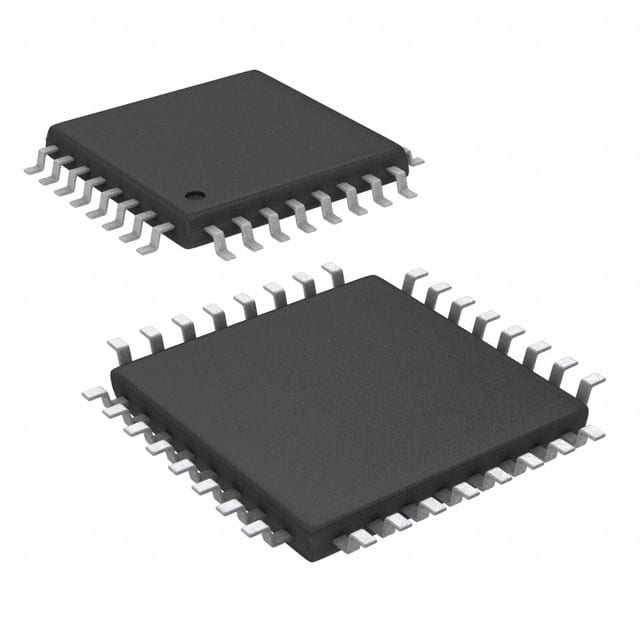ADS1192IPBS
Product Overview
Category
ADS1192IPBS belongs to the category of integrated circuits (ICs).
Use
The ADS1192IPBS is commonly used in medical and healthcare applications for acquiring and processing bio-potential signals.
Characteristics
- High-resolution analog-to-digital converter (ADC)
- Low-power consumption
- Two-channel simultaneous sampling
- Built-in programmable gain amplifier (PGA)
- Integrated lead-off detection
- Flexible power supply options
Package
ADS1192IPBS is available in a small outline package (SOP) with 20 pins.
Essence
The essence of ADS1192IPBS lies in its ability to accurately capture and digitize bio-potential signals, making it suitable for various medical monitoring devices.
Packaging/Quantity
ADS1192IPBS is typically sold in reels or tubes containing multiple units. The exact quantity may vary depending on the supplier.
Specifications
- Resolution: 16 bits
- Sampling Rate: Up to 2 kSPS (thousand samples per second)
- Input Voltage Range: ±4.5 V
- Power Supply Voltage: 2.7 V to 5.25 V
- Operating Temperature Range: -40°C to +85°C
Detailed Pin Configuration
- VREFP: Positive reference voltage input
- VREFN: Negative reference voltage input
- AVDD: Analog power supply
- DVDD: Digital power supply
- CLK: Clock input
- START: Start conversion input
- DRDY: Data ready output
- RESET: Reset input
- TEST: Test mode input
- PWDN: Power-down input
- LOFF_STATP: Lead-off status positive input
- LOFF_STATN: Lead-off status negative input
- LOFF_FLIP: Lead-off flip input
- LOFF_SENSP: Lead-off sense positive input
- LOFF_SENSN: Lead-off sense negative input
- CH2N: Channel 2 negative input
- CH2P: Channel 2 positive input
- CH1N: Channel 1 negative input
- CH1P: Channel 1 positive input
- AGND: Analog ground
Functional Features
- Simultaneous sampling of two channels
- Programmable gain amplifier for signal amplification
- Built-in lead-off detection for electrode status monitoring
- Low-power consumption for extended battery life
- High-resolution ADC for accurate signal digitization
Advantages and Disadvantages
Advantages
- Accurate and reliable bio-potential signal acquisition
- Integrated lead-off detection enhances patient safety
- Low-power consumption extends device battery life
- High resolution ensures precise signal digitization
Disadvantages
- Limited to two-channel simultaneous sampling
- Requires external components for complete system implementation
- Relatively higher cost compared to some alternatives
Working Principles
ADS1192IPBS works by amplifying and digitizing bio-potential signals from the input electrodes. The programmable gain amplifier allows for signal amplification, while the integrated ADC converts the analog signals into digital data. The lead-off detection feature monitors the electrode connection status, ensuring patient safety during measurements.
Detailed Application Field Plans
ADS1192IPBS finds applications in various medical and healthcare devices, including: - Electrocardiography (ECG) monitors - Electromyography (EMG) devices - Electroencephalography (EEG) systems - Portable health trackers - Wearable medical devices
Detailed and Complete Alternative Models
Some alternative models to ADS1192IPBS include: - ADS1292R: Similar functionality with additional features like respiration measurement - ADS1293: Three-channel simultaneous sampling with integrated impedance measurement - ADS1194: Four-channel simultaneous sampling with lower resolution
These alternative models offer different capabilities and can be chosen based on specific application requirements.
Word count: 520 words
רשום 10 שאלות ותשובות נפוצות הקשורות ליישום של ADS1192IPBS בפתרונות טכניים
Sure! Here are 10 common questions and answers related to the application of ADS1192IPBS in technical solutions:
Q: What is ADS1192IPBS? A: ADS1192IPBS is a high-performance, low-power, dual-channel analog-to-digital converter (ADC) specifically designed for medical and industrial applications.
Q: What is the purpose of using ADS1192IPBS in technical solutions? A: ADS1192IPBS is used to convert analog signals from sensors or other sources into digital data that can be processed by microcontrollers or other digital systems.
Q: What are the key features of ADS1192IPBS? A: Some key features include low power consumption, high resolution (up to 24 bits), low noise, built-in programmable gain amplifiers, and flexible input multiplexing.
Q: Can ADS1192IPBS be used in battery-powered devices? A: Yes, ADS1192IPBS is designed to operate with low power consumption, making it suitable for battery-powered devices.
Q: What types of applications can benefit from using ADS1192IPBS? A: ADS1192IPBS is commonly used in applications such as electrocardiography (ECG), electromyography (EMG), electroencephalography (EEG), and other bio-potential measurements.
Q: How many channels does ADS1192IPBS support? A: ADS1192IPBS supports two channels, allowing simultaneous measurement of two different signals.
Q: Can ADS1192IPBS handle high-frequency signals? A: Yes, ADS1192IPBS has a wide bandwidth and can accurately capture high-frequency signals up to several kilohertz.
Q: Is ADS1192IPBS compatible with different microcontrollers or digital systems? A: Yes, ADS1192IPBS communicates using a standard serial interface (SPI), making it compatible with a wide range of microcontrollers and digital systems.
Q: Does ADS1192IPBS provide any built-in signal conditioning features? A: Yes, ADS1192IPBS includes programmable gain amplifiers (PGAs) that can amplify weak signals and adjust the gain to match the input signal level.
Q: Are there any evaluation kits or reference designs available for ADS1192IPBS? A: Yes, Texas Instruments provides evaluation modules and reference designs that can help developers quickly prototype and integrate ADS1192IPBS into their applications.
Please note that these answers are general and may vary depending on specific application requirements and implementation details.


